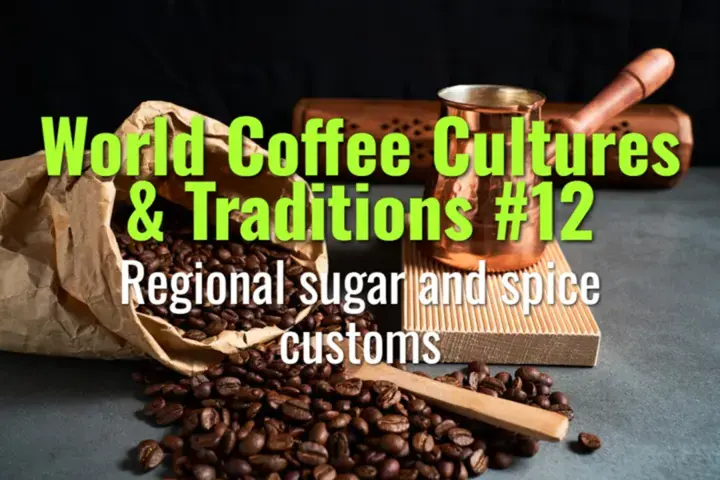Regional sugar and spice customs
How different cultures incorporate sugar, spices, and flavorings into coffee traditions, reflecting history, resources, and taste preferences.
- Coffee Basics Nerds
- 2 min read
Article 12 of 12 in World Coffee Cultures & Traditions/

Middle East & North Africa
- Cardamom in Arabic qahwa: Symbol of hospitality, adds fragrance and warmth.
- Morocco: Coffee sometimes infused with spices like cinnamon, nutmeg, and cloves.
- Egypt: Coffee can be flavored lightly with cardamom, similar to Turkish styles.
Latin America
- Mexico – Café de olla: Brewed with piloncillo (unrefined cane sugar) and cinnamon in clay pots.
- Cuba – Cafecito: Sugar whipped into the espresso to form espuma.
- Brazil – Cafezinho: Sugar added during brewing, making it sweet and intense.
Asia
- Vietnam: Sweetened condensed milk as the default sweetener.
- Indonesia – Kopi jahe: Tubruk coffee with fresh ginger for spice and warmth.
- India: Spiced coffee with cardamom, cinnamon, and sometimes pepper, similar to masala chai traditions.
Europe
- Austria – Viennese coffee houses: Coffee often paired with whipped cream and sometimes spices.
- Italy: Minimal sugar, no spices—simplicity is valued.
- Greece: Sweetness levels (sketo, metrios, glykos) standardized when ordering.
Key Observations
- Sugar use often reflects historical access to trade goods like cane sugar or condensed milk.
- Spices signify regional identity and ritual, often linked to hospitality.
- Some traditions emphasize sweetness to balance bitterness (Cuba, Brazil), while others emphasize aroma and ceremony (Middle East, Mexico).
Summary
Around the world, coffee customs with sugar and spices reflect regional history, trade, and culture. From cardamom in the Middle East to piloncillo in Mexico and condensed milk in Vietnam, these practices transform coffee into a uniquely local expression of taste and tradition.